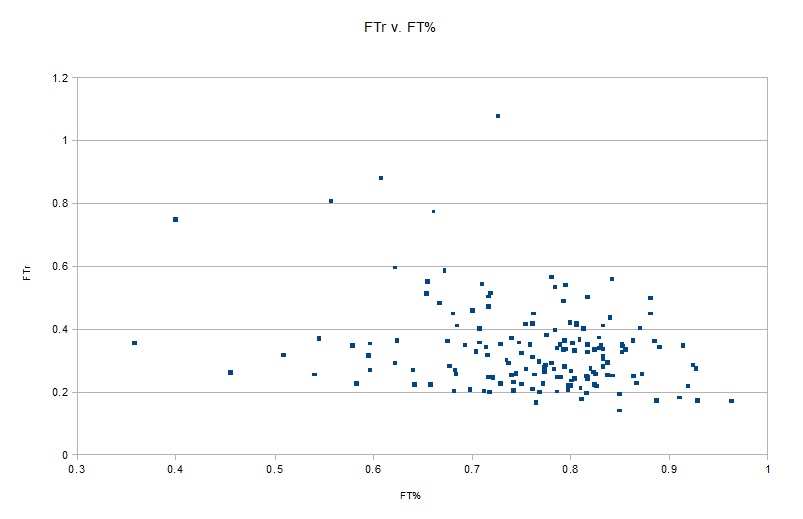Just be right there when the whistle blows
I need a sanctified mind to help me out right now— The Rolling Stones, All Down the Line
New Orleans Pelicans News
Things have been busy here, so I’ll be racapping most of December in the coming days.
In the week ending on December 15, the Pelicans went 2-1, bringing their record to 11-11 at the end of it all, and they did it without Anthony Davis.
The 111-106 overtime victory over the Detroit Pistons was, in some sense, just what the doctor ordered. Facing big men like Drummond and Monroe without Davis was supposed to be a fearsome undertaking, but the Pelicans proved themselves up for the task, as Smith and Aminu out-rebounded them, with Smith adding 22 points. A number of Pelicans played well, but Smith was really the linchpin. He played over 40 minutes and committed only 3 fouls, as well. As a team, they were able to handle a foe in their weakened condition, while fending off the late charge by an opponent. It was not a “growing up” moment, but it was something.
The Pelicans took care of the Grizzlies with another strong closing performance, winning 104-98. The Pelicans could not keep up their rebounding efforts, but Gordon and Holiday really took it to the Grizzlies, pouring in 45 points on 26 shots, with Evans, who re-injured his ankle, had 6 points all from the line, and the rest of the team getting 53 points on 50 shots. This time, the Grizzlies built an early lead, which the Pelicans eroded. The Pelicans then reversed the situation, but held off a late Grizzles charge, never letting them closer than 5 points in the late stages of the game. They key run was he last half of the third quarter. The Pelicans allowed only 8 points in the first 6 minutes, but allowed only 3 in the last 6 minutes, all from the line. The Pelicans matched the 8 points in the first 6 minutes, but poured in 19 in the second set. That’s the ballgame right there.
The loss to the Nuggets brought the team down to 0.500 again, but the 102-93 loss was quite curious. Lacking Davis and Evans makes the loss-pill go down a little more easily, but the manner of the loss is quite clear: free throws. In this case, both teams shot 30 of 61 from 2 and 7 of 24 from 3. Ergo, the difference was precisely the performance at the line. Denver went 21 of 28, the Pelicans only 12 of 19 . . . lower volume and lower efficiency. In particular, Faried, Hickson, and Mosgov combined for 11 of 16 from the line, nearly what the Pelicans did as a team. Anderson was the only big to make free throws (4 of 4), and Amundson missed his two attempts. Davis and Evans both work inside, and there was the game, as near as I can tell.
Around Bourbon Street Shots
In the NO discussed the Pelicans’ injury situation, as it looked quite dire after losing Evans to the bench again to join Davis and Stiemsma.
Trew 2 the Game asked a very good question (which was asked by long-time fan Helena): Where’s the confetti?
On December 15, many free agents became eligible for trade. Michael dissected some of the most relevant rules and proposed some trade packages.
Lastly, the guys tackled a number of topics afoot in the Pelicans and NBA discussions.
`Voices’ of the People
The only promotions I see on the calendar are a kid’s jersey, a kid’s drawstring bag, mardi gras beads, and a pelicans car chargers. Maybe I missed one, but c’mon. the Zephyrs are able to have better promotions. Especially with the injuries and the need to attract people, we need some better promos. t-shirts, bobbleheads, caps, etc. Give the fans something to wear around town. The Dallas Stars just changed logos, and I get emails all the time from them about swag at games that fans can wear. Pels need to step up.
I agree that Gordon is not currently the player he once was. And he’s not worth the huge contract. But if they lose his shooting and don’t replace it, the offense is going to really really suffer.
What sweet shooting decent defending guards might be had to replace him? How long are you willing to let progress stagnate while trying to make addition by subtraction work? (Remember the whole key is convincing AD to sign that extension next Summer.)
So I am not yet convinced that trading him for cap relief is a wise move. If the guys we have can stay healthy and gel, they could challenge for an eighth seed this year and take another step up the next year. At that point, I think their success and youth would help them get a better big to shore up the paint on a lower price FA deal.
What is the big deal about trading Austin Rivers? The coaching staff gives him barely any playing time. Does he need development? yes. just like all players, he needs to develop. He was a top 10 pick. Invest time in him and he can make good plays. He’s the type of player that needs about 18-23 minutes to have a good impact. Dell knew drafting him he would need development. The coaching staff needs to invest. As he gets more and more playing time I guarantee he will produce. Y’all so gung-ho on trading him just like y’all were with Thorton, bellinelli, tyson chandler, jr. smith and what they ALL doing since leaving new orleans? PRODUCING and becoming valuable members of their respective teams. You don’t pick a player top 10 just to get rid of him the next year. You invest time, just like the coaching staff did with AD. AD and Austin are our future. Thats the Pelicans problem throughout the history of the franchise… we have always had peices to have a great team but our coaching staff doesn’t wanna invest time in certain players. If anyone that needs to be traded because of lack of production is Aminu. Y’all were never so enthused about traded him.
regardless Geaux Pelicans, Saints, and LSU
42 Sense
The Denver game this week got me to thinking, and it’s been some time, but I wanted to look into the Pelicans’ free throw shooting. I often joke with my STH neighbor (Mikey! Sorry I missed Justin’s party . . . prior party went long) about teams’ “free throw defense,” but there is something to that, which is part of why intentional fouls play an important role in the game. At times, poor free throw shooters must be benched, and getting an in-bounding pass to a great free throw shooter is key.
Using basketball reference as a source, we note that the overall FT% for players in the NBA is about 75% (not filtering at all). The FTr, or free throw rate, is the ratio of free throws attempted to the number of field goals attempted. This is about 25% on average (again, not filtering at all).
What I’m most interested in here is the real drivers of the game, as opposed to statistical anomalies. Filtering the data for players that have attempted at least 50 free throws (somewhat arbitrarily chosen to give some meaningful FT% and game influence, but the average number of free throws taken this season is 47, so slightly above that works for me), brings the list down to 157 players. All of these players have logged at least 400 minutes this season, played in at least 13 games, and have attempted at least 80 field goals, as well. References to averages, etc. below refer to this reduced data set.
In this reduced data set, the overall FT% is relatively unchanged (12195/15955 ~ 0.764), but the FTr increases to about 1/3 (15955/49415 ~ 0.323) instead of 1/4.
Below is a plot of the FTr v. FT% for those 157 players.

Let’s dissect the chart to start. The higher a point is on the chart, the higher the FTr, and the more significant the effect a player can have on the final score by getting to the line by way of shot attempts. This underlying assumption is that this is primary mechanism for getting to the line, as opposed to technical free throws, intentional fouls, defensive errors when a team is in the penalty, etc. Still, as a relative index, this number is likely useful, at least as a starting point. Also, examining these rates, once the data is filtered for those points that are likely to give a robust signal, eliminates effects due to differences in pace, availability, etc. It’s not perfect, but nothing is.
The farther to the right a point is, the more positive the effect. If the point is to the left, it is less positive.
Thus, the upper right quadrant is the good region, followed by the lower right, lower left, then upper left.
The five points that are the most extremely in the upper left immediately stand out. The highest FTr (1.08) has a just below average FT% (0.726). That belongs to Tyler Hansbrough. He’s one of the smaller sample-size guys (469 minutes), but the line is pretty impressive, even if he only hits free throws at just below an average rate. His TS% (0.559) is close to that of Ryan Anderson (0.568), to put this in perspective.
The other four points are, in descending FTr are Mason Plumlee, Dwight Howard, Steven Adams, and DeAndre Jordan. That really low FT% (0.358) belongs to Andre Drummond, by the way.
Note that none of the most extreme FTr have an above average FT%. This is mostly as result of rational behavior on the part of coaches and players. Still, there are 41 players that are above average in both categories, or less than 10% of the NBA.
Circling around to the Pelicans, 5 members of the team make the cut of 157 players, which is what is expected: Anderson, Davis, Evans, Gordon, and Holiday. Of these, only Davis and Evans are above average in both categories. Also, as most teams are expected to have either 1 or 2 such players, the Pelicans are unremarkable. This, however, does point squarely to the reason the Pelicans lost to the Nuggets: they were missing their players who are most effective in getting to the line . . . nearly 40% of their free throws.
Houston, who tops the NBA in FTr also only has 2 such players: Harden and Lin. The Spurs, who are the bottom on the NBA in FTr, have none.
An interesting note is that Eric Gordon’s career statistics peg him as above average in both categories. This season, however, his FTr fails to qualify. He’s making his free throws, but his attempts have fallen off by over 2 per 36 minutes. Another call per game, and the Pelicans will the Nets, Suns, and Timberwolves as teams with 3 players with above average FTr and FT%, each of whom, as a team, is above NBA average in FTr; the Suns are below NBA average in FT%, but the other two teams are above average.
It’s not immediately clear why Gordon’s FTA (per 36 minutes) have fallen off, but it’s just one more thing to keep an eye on, as Gordon needs to improve in many different areas if he wants to be offered another max deal once this one ends.
